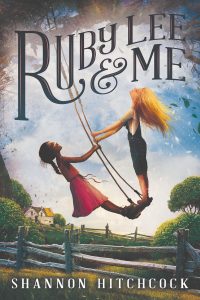
- Home
- Books
- Bio
- Author Visits
- For Teachers
- For Press
- For the Press Of Words & Water
- For the Press Dancing in the Storm
- For the Press Story Quilts
- For the Press She Sang for the Mountains
- For the Press Saving Granddaddy’s Stories
- For the Press – Flying Over Water
- For The Press – One True Way
- For the Press – Ruby Lee & Me
- For the Press – The Ballad of Jessie Pearl
- Press Release ONE TRUE WAY
- Media Release – The Ballad of Jessie Pearl
- BLOG
- Store
- Contact
Ruby Lee & Me
Everything’s changing for Sarah Beth Willis. After Robin’s tragic accident, everyone seems different somehow. Days on the farm aren’t the same, and the simple fun of riding a bike or playing outside can be scary. And there’s talk in town about the new sixth-grade teacher at Shady Creek. Word is spreading quickly–Mrs. Smyre is like no other teacher anyone has ever seen around these parts. She’s the first African American teacher. It’s 1969, and while black folks and white folks are cordial, having a black teacher at an all-white school is a strange new happening. For Sarah Beth, there are so many unanswered questions. What is all this talk about Freedom Riders and school integration? Why can’t she and Ruby become best friends? And who says school isn’t for anybody who wants to learn–or teach? In a world filled with uncertainty, one very special teacher shows her young students and the adults in their lives that change invites unexpected possibilities.
Gr 3–6—After a tragic accident leaves her younger sister Robin hospitalized, 12-year-old Sarah must move in with her grandparents. Miss Irene is Granny’s neighbor and friend, and her granddaughter Ruby Lee has been Sarah’s best friend since she can remember. The trouble is, Sarah is white and Ruby Lee is black—and it’s 1969 in North Carolina. The local school will be integrated this year, and the first black teacher has been hired. Tension is high in the tiny town of Shady Creek. Forced to leave her home and start over on her grandparents’ farm, Sarah must come to grips with her guilt about her sister, her anger and confusion about Ruby Lee, and the uncertainty of relationships among whites and blacks in the rural South. Balancing the heavier topics are home-style recipes, strong storytelling, and Southern charm, which will engage younger middle grade readers. The characters are well developed and the historical setting realistic. VERDICT Tenderly told, this appealing story explores racial tensions during a key moment of the civil rights movement.
School Library Journal, Carol Connor, Cincinnati Public Schools, OH
Hitchcock deftly weaves her narrative through history to gently bring important past events to light. Excellently written, the novel’s characters avoid stereotyping and are well-developed, and Hitchcock perfectly captures Sarah Beth’s voice as she wrestles with big questions. The somber themes of race relations and personal guilt are handled sensitively and with a good dose of flour, courtesy of Sarah Beth’s grandmother, and hope for racial healing is offered. A heartening and important offering for younger readers.
Booklist, starred review, The best book reviews for public & school libraries
[A story] about sibling love and self-forgiveness
Kirkus Reviews
Sarah’s inner struggles take place against the background of integration in a rural North Carolina community; Hitchcock… depicts her guilt, anger, and grief with credibility and the important people in her life in sympathetic, fully dimensional fashion.
Publishers Weekly





